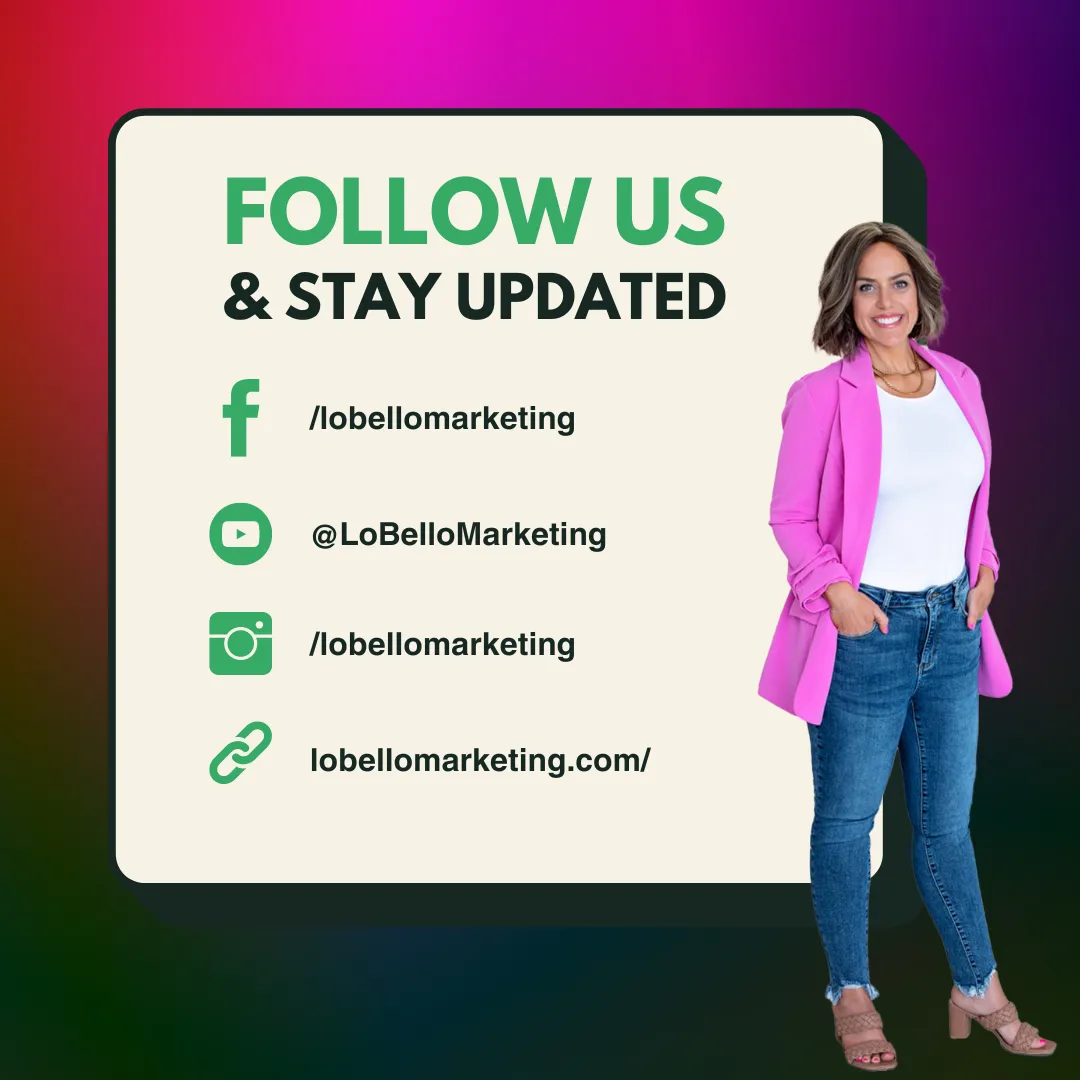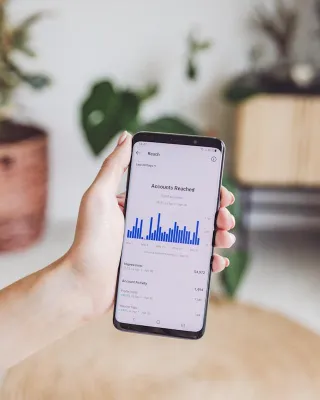

A Comprehensive Marketing Team at a Fraction of the Price
Stop struggling to stand out in the crowd and let LoBello Marketing help you attract and attain new customers.
A Comprehensive Marketing Team at a Fraction of the Price

Stop struggling to stand out in the crowd and let LoBello Marketing help you attract and attain new customers.
We Specialize in Marketing for Small Businesses
We partner with clients to either supplement their in-house marketing department or serve as their full-service outsourced marketing department. Even if you know nothing about marketing, we are here to step in and guide you or just do it for you so your time is freed up to focus on more important things.
We Specialize in Marketing for Small Businesses
We partner with clients to either supplement their in-house marketing department or serve as their full-service outsourced marketing department. Even if you know nothing about marketing, we are here to step in and guide you or just do it for you so your time is freed up to focus on more important things.
What We Offer

Digital Marketing
Boost your brand’s visibility and engage potential customers by actively participating on social media platforms like Facebook, Instagram, TikTok, YouTube, or LinkedIn through targeted ad campaigns.
Be present where your audience is, capturing their attention at the right moment to maximize brand awareness.
Branding & Design
Set your brand apart with custom designs that reflect your identity. Explore creative strategies to enhance your brand, product packaging, and messaging.
We partner with businesses to create unique and tailored brand pieces that meet their specific needs.

Branding & Design

Set your brand apart with custom designs that reflect your identity. Explore creative strategies to enhance your brand, product packaging, and messaging.
We partner with businesses to create unique and tailored brand pieces that meet their specific needs.

Email Marketing & Lead Generation
We work with all kinds of businesses to help them sell more using proven marketing techniques. Even though we live in a digital age, old-fashioned marketing methods still work well. Some people like traditional ways of advertising, but we’re experts in creating strategies that use both traditional and digital methods for the best results.
Email Marketing & Lead Generation

We work with all kinds of businesses to help them sell more using proven marketing techniques. Even though we live in a digital age, old-fashioned marketing methods still work well. Some people like traditional ways of advertising, but we’re experts in creating strategies that use both traditional and digital methods for the best results.
Videography & Photography

Did you know that businesses using video content experience a 49% faster revenue growth than those that don’t?
Adding videography and photography to your small business marketing strategy can significantly boost engagement, enhance brand recognition, and build trust with potential customers. High-quality visuals help convey your brand’s story, showcase your products or services, and create a memorable first impression.
Compelling photos and videos also perform better on social media platforms and websites, attracting more visitors and increasing the likelihood of conversion.
Clients We Have Served….

























Your Success is Our Business
Boost your brand’s visibility and engage potential customers by actively participating on social media platforms like Facebook, Instagram, TikTok, YouTube, or LinkedIn through targeted ad campaigns. Be present where your audience is, capturing their attention at the right moment to maximize brand awareness.
Helpful Tips from LoBello Marketing
Effective marketing is an ongoing process, and we’re continually refining our strategies
and tactics to take full advantage of every opportunity to improve your results. Here is
some of the most helpful information we’ve come across lately…

Small Business Marketing- Social Media Ads
Social media ads help small businesses reach more people, boost sales, and grow their brand. ...more
Social Media Tips
October 12, 2024•3 min read

Top Hooks For Any Niche!
A person brainstorming content ideas, surrounded by notes and a laptop, showcasing creativity for social media marketing strategies. ...more
Social Media Tips
October 01, 2024•3 min read

Why You Should Choose an Agency Over a Social Media Manager
Discover why a full agency team offers comprehensive social media solutions compared to a single manager. ...more
Social Media Tips
September 25, 2024•2 min read

Understanding Growth Content vs. Conversion Content: Why Both Matter for Your Social Media Strategy
Have you ever gone out of your way to buy something or use a service because it significantly benefits your life, even if it’s a bit inconvenient? Think about what convinced you to make that choice. ...more
Social Media Tips
September 25, 2024•2 min read